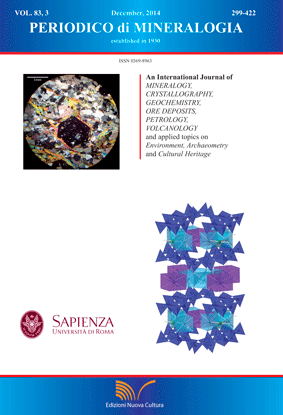Chemical and physical characterization of the stucco mihrab of the mausoleum of Muhammad Al-Hasawati, Fatimid period, Cairo, Egypt
DOI:
https://doi.org/10.2451/2014PM0017Keywords:
stucco, mihrab, gypsum, lime, deterioration, conservation.Abstract
Stucco mihrabs in Islamic buildings in Egypt are suffering from many causes of deterioration, mainly groundwater and salt weathering, which have caused the complete loss of the decorations of some of these mihrabs. Some other mihrabs need restoration and conservation, so a solution for this problem has become urgent. A physiochemical study using analytical techniques such as X-ray diffraction, X-ray fluorescence, Fourier transform infrared and scanning electron microscopy was done. This characterization study, on one hand made reproduction of the original material possible; on the other hand, the deterioration factors of the stucco were determined. All analytical methods indicated that the Al-Hasawaty stucco mihrab contains lime, gypsum, dolomite, quartz, anhydrite and bassanite; they also proved that sodium chloride (halite) is the principal salt causing deterioration.


